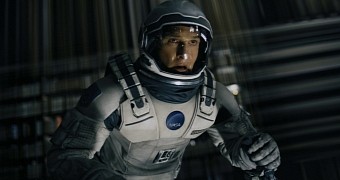Writer / director Christopher Nolan is famously a hands-on kind of a filmmaker, to the point where he won’t even hire a second unit director for scenes usually deemed of lesser importance in the context of the finished production.
He’s also very much against CGI and would often shoot scenes using a mix of practical and visual effects in an old-school-type of way. His most recent film, last year’s “Interstellar,” was no different.
The video below, today’s suggestion for Viral of the Day, is for the Nolan fans and those moviegoers who aren’t yet familiar with but don’t mind learning more about his craft. Really, this is a man for whom every detail is important, no matter how small, and this becomes obvious in the trouble he and the team put themselves through to create the Tesseract in the film.
The Tesseract appears in the third act and allows Matthew McConaughey’s character to contact his daughter back on Earth because it’s a five-dimensional representation of her room.
Creating the set to shoot that scene was one of the trickiest things during the production, Nolan and his people admit - made more difficult by the fact that the script was vague in its description of it. In fact, it was so difficult that they put it off until the end, when they had no other option left but to get on with the design.
Nolan could have simply used the traditional green screen many Hollywood productions make so liberal use of, but he wanted everything to be perfect.
After months of work and more weeks to design the set, they finally came up with something that fit the science used in the film and Nolan’s idea. Here’s the video showing you how it was done.

 14 DAY TRIAL //
14 DAY TRIAL //